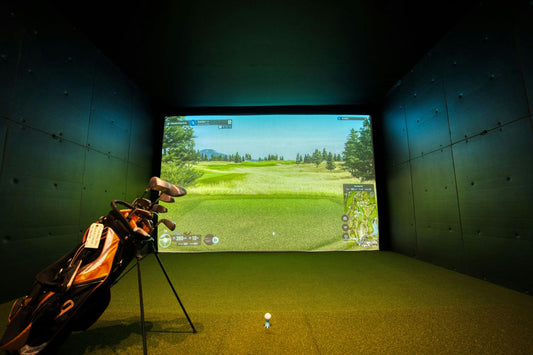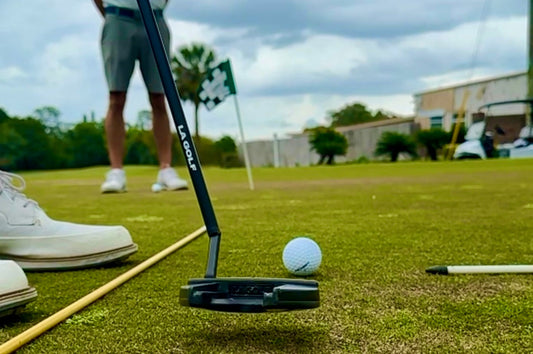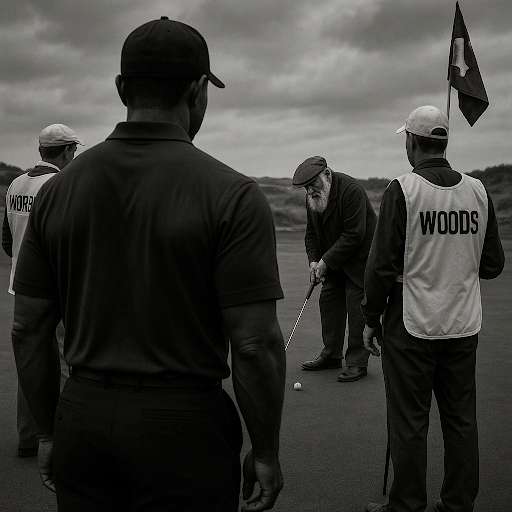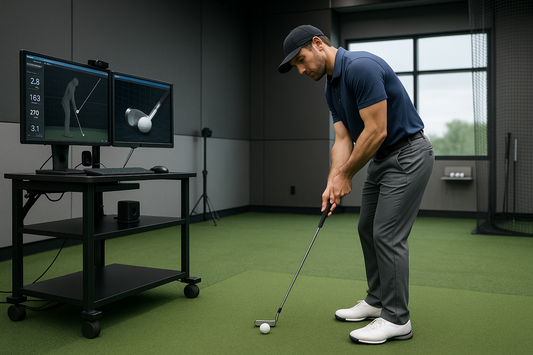After two decades of teaching putting, I've watched technology transform how we understand and really improve the most crucial part of the game. When I started coaching in the early 2000s, putting instruction mainly was a matter of guesswork based on feel and observation. Today, we have precise data on every aspect of your stroke.
It's important to note that using technology won't automatically make you a better putter. I've seen many players become so obsessed with the data that they forget the fundamental goal is to get the ball in the hole.
The key to using technology effectively is knowing the right actionable insights to pay attention to and how to utilize them to build skills that transfer to the course.
Understanding What Technology Has The Potential To Do

The most valuable putting technology answers three fundamental questions: Where is your putter face pointing at impact? What path is your putter traveling? How consistently are you striking the ball?
Everything else is secondary. I've worked with highly competitive plus handicap players who obsess over launch angle data that varies by fractions of degrees, when their real issue is inconsistent face angle that's costing them two strokes per round. Technology should simplify your improvement process, not complicate it.
The best putting technology provides immediate, actionable feedback that you can feel and see during practice. If you need a computer science degree to interpret the data, it's probably not helping your putting.
Launch Monitors: The Truth About Your Stroke

Modern putting launch monitors provide precise measurements of what actually happens during impact. These devices use high-speed cameras and sensors to track your putter face angle, swing path, impact location, and ball launch characteristics with incredible accuracy.
What makes launch monitor data valuable is its objectivity. You might feel like you're making a straight-back, straight-through stroke, but the monitor might reveal a three-degree inside-to-out path that's causing your misses. This kind of feedback is impossible to get through feel alone.
The most valuable metrics are face angle at impact, swing path deviation, and impact location on the putter face. Face angle typically determines where your putt starts, while path affects roll quality and consistency.
However, launch monitors work best when used strategically rather than constantly. I recommend using them for diagnostic sessions to identify specific mechanical issues, then practicing without the technology to develop feel and instincts.
Mobile Applications: Practice Structure in Your Pocket

Smartphone applications have democratized access to structured putting practice by providing drills, progress tracking, and performance analytics that were once available only to tour professionals. The best putting apps function as virtual coaches, guiding you through progressive skill-building exercises.
What makes putting apps particularly valuable is their ability to gamify practice and provide a consistent structure. Instead of just rolling balls toward a cup, apps guide you through specific drills that target distance control, accuracy, or putting under pressure. Many include built-in timers, scoring systems, and progress tracking that keep you engaged.
The most effective putting apps focus on measurable skills rather than vague concepts. Look for applications that track specific metrics, such as the make percentage from various distances, the average distance from the hole on lag putts, or consistency in starting line accuracy.
Stroke Analysis Systems: Seeing What You Cannot Feel

Advanced stroke analysis systems use sensors, cameras, or a combination of both to provide detailed information about your putting mechanics. Many of these systems can track putter head movement in three dimensions, showing exactly how your stroke deviates from your intended path and timing.
What makes stroke analysis particularly valuable is its ability to reveal subtle flaws that are impossible to detect through observation alone. A stroke that looks smooth and consistent might actually have slight deceleration through impact or face angle that varies by several degrees between putts.
The most useful stroke analysis focuses on consistency metrics rather than absolute positions. Perfect mechanics vary between individuals, but consistency in key measurements like tempo, face angle, and impact location is universal among good putters.
Many stroke analysis systems include training modes that provide real-time feedback during practice, alerting you when your stroke deviates from desired parameters. This immediate feedback can accelerate learning by helping you feel what correct mechanics actually feel like.
Distance Control Technology: The Key to Eliminating Three-Putts

Specialized distance control training systems focus specifically on developing the speed control that prevents three-putts and sets up more makeable second putts. These systems typically use sensors or cameras to measure ball speed, roll distance, and stopping location relative to your target.
What makes distance control technology particularly valuable is its focus on the skill that has the biggest impact on scoring. Most golfers lose more strokes to poor distance control than to missed short putts, but distance control receives the least focused practice.
The best distance control systems provide immediate feedback about putt speed and final location, allowing you to make quick adjustments and develop better instincts. Some include target zones or scoring systems that gamify distance control practice, making it more engaging and providing clear metrics for improvement.
Pressure and Impact Sensors: The Feel Factor
 Pressure-sensitive training aids and impact sensors provide feedback about how you're gripping the putter and making contact with the ball. These technologies address two crucial but often overlooked aspects: grip pressure consistency and impact quality.
Pressure-sensitive training aids and impact sensors provide feedback about how you're gripping the putter and making contact with the ball. These technologies address two crucial but often overlooked aspects: grip pressure consistency and impact quality.
Grip pressure sensors show changes throughout the stroke and in different situations. Most golfers unconsciously tighten their grip when they are under pressure or during longer putts. This will affect the smoothness and consistency of their stroke.
Impact sensors focus on the quality of contact between the putter and ball, measuring factors such as impact location on the face, strike quality, and the efficiency of energy transfer. Poor impact quality can cause putts to wobble, bounce, or roll inconsistently, even when your stroke mechanics are sound.
Integration and Practical Application
The real power of putting technology comes when different systems work together to provide comprehensive feedback about your stroke and performance. Modern training setups often combine launch monitor data with stroke analysis and mobile app features to create comprehensive practice environments. This can be one of the most powerful things you could do for your game.
However, the key to effective technology use is integration with traditional practice methods, rather than replacing them. Technology should enhance your feel and instincts, not replace them. The best approach combines high-tech analysis sessions with low-tech feel development, using data to identify issues and traditional practice to develop solutions.
I recommend using technology for diagnostic purposes and skill development, then practicing without it to develop course-ready instincts. The goal is to internalize what good putting feels like so you can perform without external feedback during actual rounds.
Choosing the Right Technology for Your Needs
Not all putting technology is appropriate for every golfer or every stage of development. Beginners often benefit more from simple feedback about basic mechanics, while advanced players might need sophisticated analysis to identify subtle flaws. The key is matching the technology to your specific needs and improvement goals.
Consider your current skill level, practice frequency, and specific weaknesses when evaluating putting technology. A player who three-putts frequently might benefit most from distance control training systems, while someone who consistently leaves putts short might need stroke analysis to identify deceleration issues.
Budget is obviously a consideration, but remember that putting accounts for roughly 40% of your total strokes in a typical round. Even expensive putting technology can provide an excellent return on investment if it helps you eliminate just one three-putt per round or make one additional putt per round.
Making Technology Work for You
The key to getting the most from putting technology is approaching it with clear goals and realistic expectations. Technology cannot replace practice, dedication, or good instruction, but it can significantly enhance the efficiency and effectiveness of your improvement process.
Start with one or two technologies that address your biggest weaknesses rather than trying to use everything at once. Master the insights from basic systems before moving to more sophisticated analysis. Remember that the goal is to achieve better performance on the course, not impressive practice statistics.
Most importantly, maintain the balance between technical analysis and feel development. The best putters combine technical understanding with strong instincts and confidence. Technology should enhance these qualities, not replace them with mechanical dependence on external feedback.
Great putting has always been about developing reliable skills through focused practice. Modern technology provides us with better tools to identify areas that need improvement and track our progress more precisely. When used intelligently, these tools can accelerate your development and help you reach your putting potential faster than ever before.





